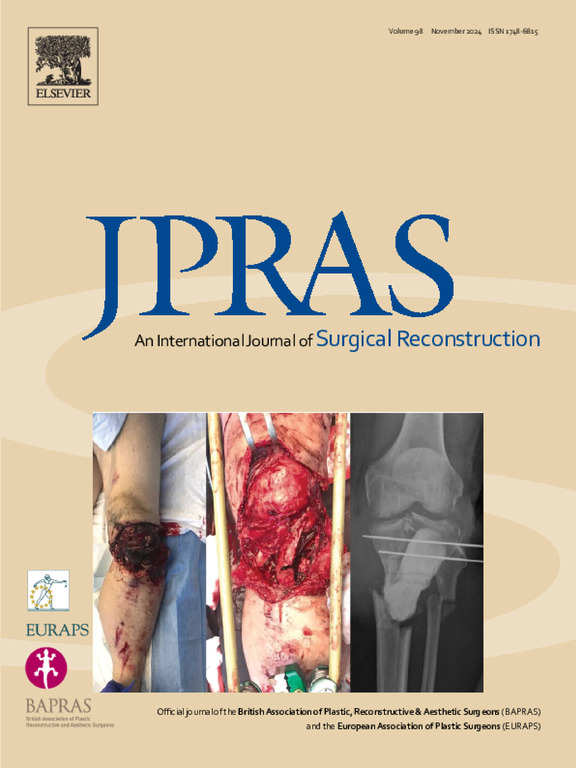应用 3D 扫描评估亚洲人的面部对称性
IF 2
3区 医学
Q2 SURGERY
Journal of Plastic Reconstructive and Aesthetic Surgery
Pub Date : 2024-09-16
DOI:10.1016/j.bjps.2024.09.025
引用次数: 0
摘要
背景面部对称能增强吸引力,目前有各种疗法来改善面部对称。然而,面部不对称的趋势仍不明确。本研究利用三维扫描评估特定面部区域之间的差异,以指导临床治疗。方法3dMD face™ 系统(3dMD Ltd,美国)扫描了 88 名参与者的面部。Geomagic Wrap 2021 分析了左右两侧。结果几位参与者的右侧面部在眉峰、眉尾、眼尾、嘴角、小结节和下颌缘位置都出现了下垂。有较高比例的人左侧鼻唇沟和木偶纹较深,而其他一些人右侧泪沟和下巴外侧凹陷较深。结论 三维扫描可在临床实践中有效评估面部不对称。研究表明,面部各区域之间的不对称差异很大。在治疗前对这些差异进行评估可指导治疗方法的选择,从而改善面部不对称。本文章由计算机程序翻译,如有差异,请以英文原文为准。
Applying 3D scanning to evaluate facial symmetry in Asian populations
Background
Facial symmetry enhances attractiveness, with various therapies available to improve it. However, trends in facial asymmetry remain unclear. This study evaluates the differences between specific facial regions using 3D scanning to guide clinical treatment.
Method
The 3dMD face™ system (3dMD Ltd, USA) scanned the faces of 88 participants. Geomagic Wrap 2021 analyzed the left and right sides. Differences in the eyebrow peaks, eyebrow tails, eye ends, and mouth corners were evaluated.
Results
Several participants showed a drooping right side of the face in the eyebrow peaks, eyebrow tails, eye ends, mouth corners, tubercula mentale, and mandibular margin positions. A higher proportion had deeper left nasolabial folds and marionette lines, whereas several others had deeper right tear ducts and lateral chin depressions. Several participants exhibited prominent right forehead and parotid masseter region, with prominent left temporal and cheek regions.
Conclusion
3D scanning effectively assesses facial asymmetry in clinical practice. Research indicates significant differences in asymmetry between the facial regions. Evaluating these differences pre-treatment can guide the selection of therapeutic methods to improve facial asymmetry.
Level of evidence
3 (Diagnostic).
求助全文
通过发布文献求助,成功后即可免费获取论文全文。
去求助
来源期刊
CiteScore
3.10
自引率
11.10%
发文量
578
审稿时长
3.5 months
期刊介绍:
JPRAS An International Journal of Surgical Reconstruction is one of the world''s leading international journals, covering all the reconstructive and aesthetic aspects of plastic surgery.
The journal presents the latest surgical procedures with audit and outcome studies of new and established techniques in plastic surgery including: cleft lip and palate and other heads and neck surgery, hand surgery, lower limb trauma, burns, skin cancer, breast surgery and aesthetic surgery.

 求助内容:
求助内容: 应助结果提醒方式:
应助结果提醒方式:


